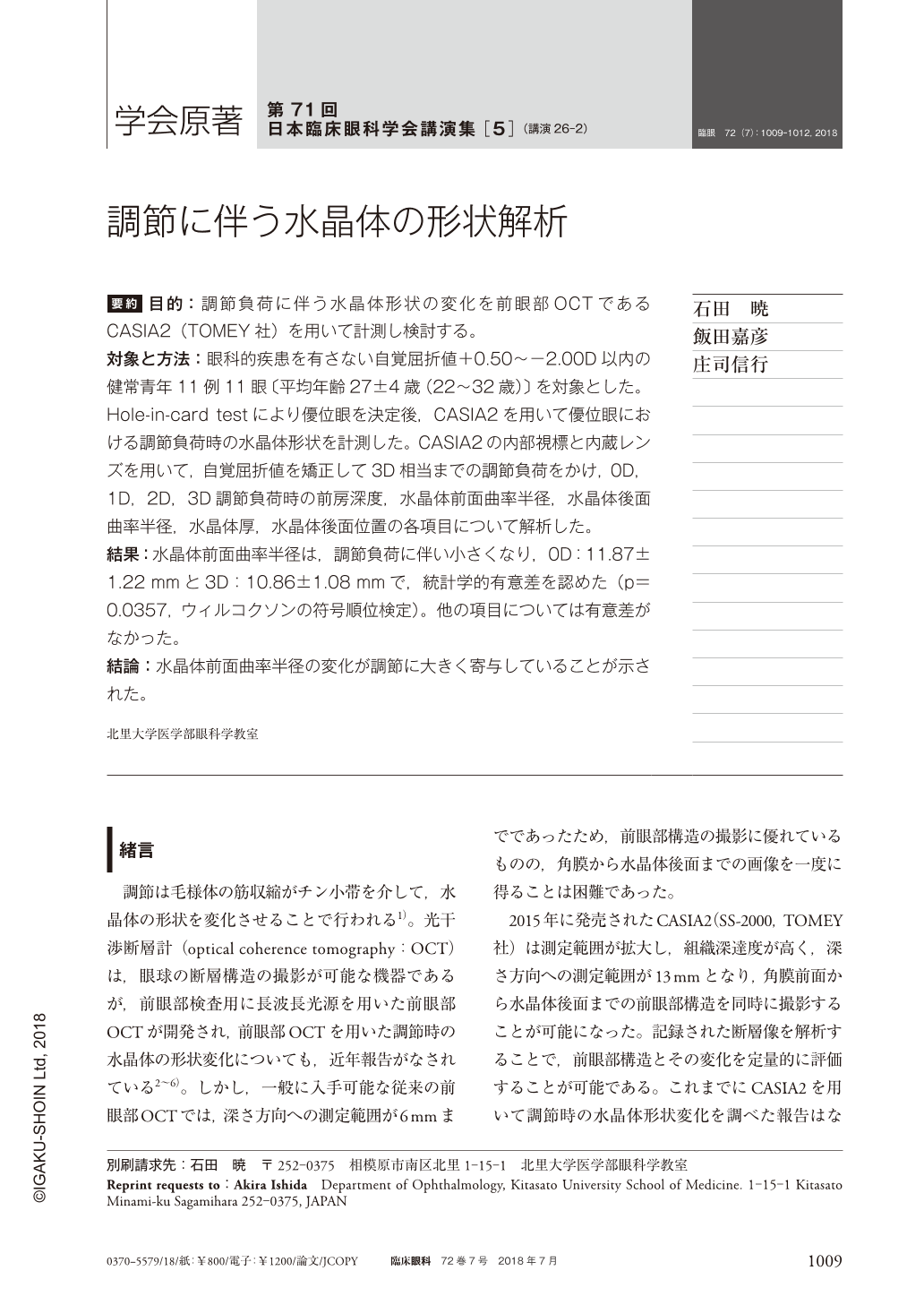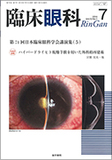Japanese
English
- 有料閲覧
- Abstract 文献概要
- 1ページ目 Look Inside
- 参考文献 Reference
要約 目的:調節負荷に伴う水晶体形状の変化を前眼部OCTであるCASIA2(TOMEY社)を用いて計測し検討する。
対象と方法:眼科的疾患を有さない自覚屈折値+0.50〜−2.00D以内の健常青年11例11眼〔平均年齢27±4歳(22〜32歳)〕を対象とした。Hole-in-card testにより優位眼を決定後,CASIA2を用いて優位眼における調節負荷時の水晶体形状を計測した。CASIA2の内部視標と内蔵レンズを用いて,自覚屈折値を矯正して3D相当までの調節負荷をかけ,0D,1D,2D,3D調節負荷時の前房深度,水晶体前面曲率半径,水晶体後面曲率半径,水晶体厚,水晶体後面位置の各項目について解析した。
結果:水晶体前面曲率半径は,調節負荷に伴い小さくなり,0D:11.87±1.22mmと3D:10.86±1.08mmで,統計学的有意差を認めた(p=0.0357,ウィルコクソンの符号順位検定)。他の項目については有意差がなかった。
結論:水晶体前面曲率半径の変化が調節に大きく寄与していることが示された。
Abstract Purpose:To assess changes in crystalline lens shape with accommodation using anterior segment optical coherence tomography〔OCT;CASIA2 (Tomey Inc.)〕.
Cases and Method:Eleven healthy subjects(mean age, 27±4 years;range, 22-32 years)were recruited. Their subjective refraction ranged from +0.5〜−2.0D. The dominant eye was determined using the hole-in-card test, and changes in crystalline lens shape with the accommodation of the dominant eye were analyzed using CASIA2. The anterior chamber depth(ACD), anterior crystalline lens radius of curvature(ALRC), posterior crystalline lens radius of curvature(PLRC), crystalline lens thickness(LT), and posterior surface of lens position(PSLP)were measured for each participant in response to 0D, 1D, 2D, and 3D of accommodative stimuli generated by the internal lens and internal fixation target of CASIA2.
Results:ALRC gradually decreased with accommodation as follows:11.87±1.22 mm at 0D and 10.86±1.08 mm at 3D(p=0.0357, Wilcoxon signed-rank test). There were no significant changes in ACD, PLRC, LT, and PSLP.
Conclusion:Change in ALRC can significantly contribute to accommodation.

Copyright © 2018, Igaku-Shoin Ltd. All rights reserved.


